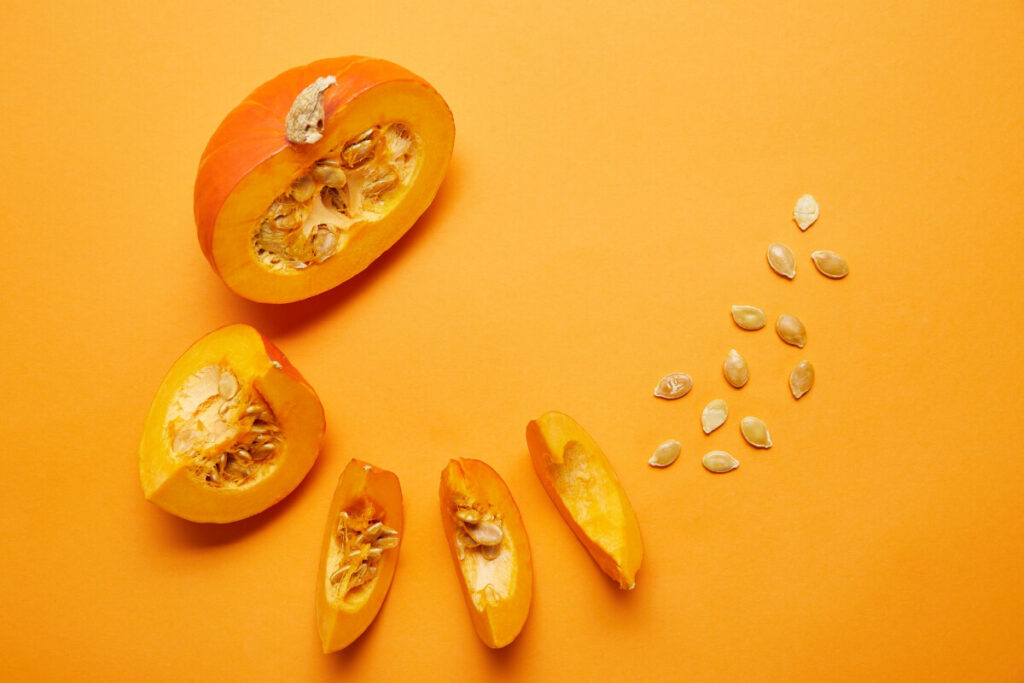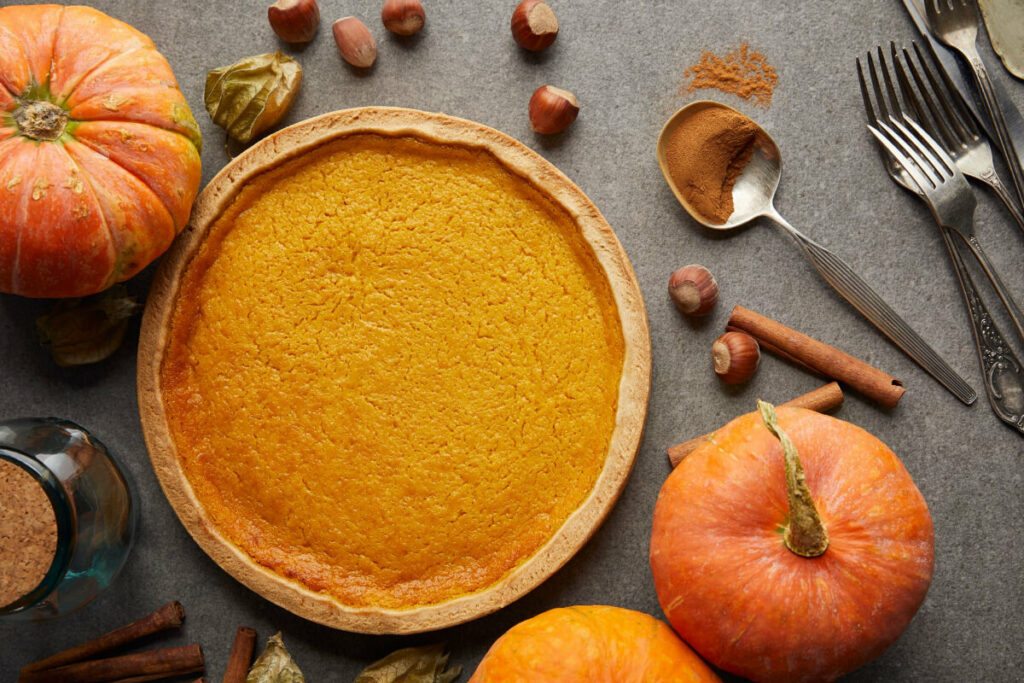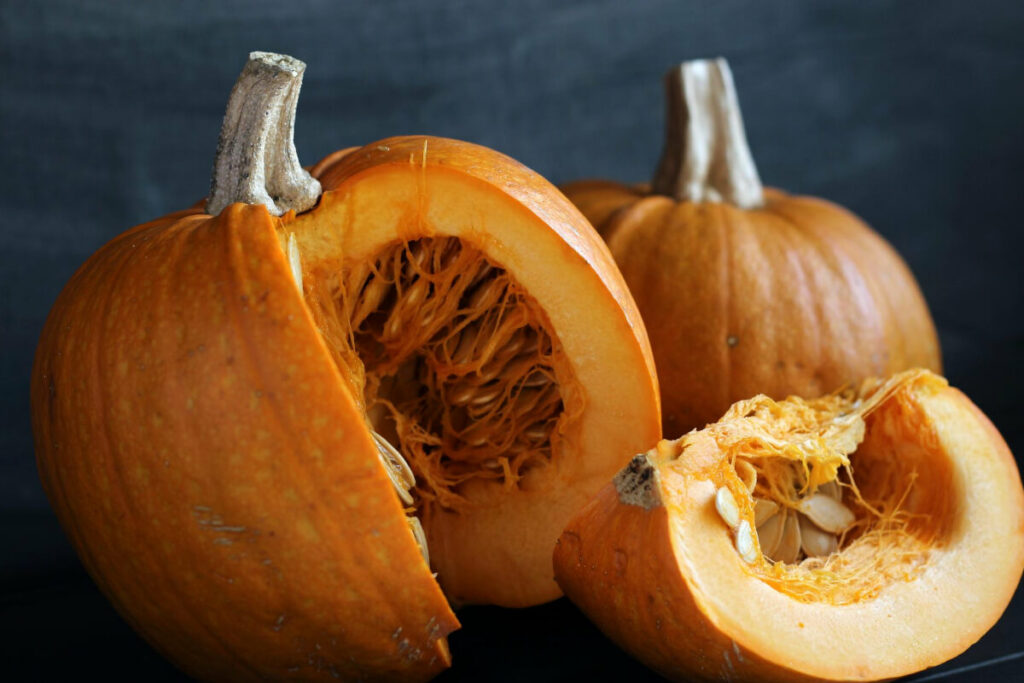Whether you associate pumpkins with Halloween or as a pumpkin pie, is pumpkin a fruit or vegetable?
Discover whether the pumpkin is classified as a fruit or vegetable, and why in this article.
Pumpkins are a great source of fiber, vitamins, minerals, and antioxidants. We’ll also get into the many health benefits in this post.
- Related article: Fruits and Vegetables Compared
Is Pumpkin a Fruit or Vegetable?
A pumpkin is a fruit and a vegetable. From a botanical standpoint and how they grow, pumpkins are considered a fruit. From a culinary standpoint and how they’re used in cooking, pumpkins are a vegetable.
The typical pumpkin is not sweet, so it has easily fallen into the vegetable category for culinary purposes. Even though pumpkins have long been associated with vegetable gardens and patches, they are, nonetheless, botanically classified as a fruit.

Why Are Pumpkins Fruits?
Pumpkins resemble tomatoes and avocados when it comes to the fruit versus vegetable debate.
In botany, plants are not classified because of their taste or due to their use in cooking. For botanists, it’s purely a question of anatomy. Anything that begins from a bloom, is technically a fruit.
Botanically, by definition, fruit is the ‘fleshy or dried ripened ovary of a plant that contains seeds and tends to grow from plant flowers.’ That describes the growth process of the pumpkin perfectly.
When you carve open a pumpkin, you’ll find a stringy textured pulp filled with “pepitas” or pumpkin seeds. Technically, what we refer to as a pumpkin is, in reality, a squash and belongs to the Cucurbitaceae family, which boasts a whopping 700 varied species.
A whole pumpkin is also botanically considered a type of berry, albeit a big one, named a pepo.
Learn about How to Save Pumpkin Seeds.
Why Are Pumpkins Vegetables?
Pumpkins are also vegetables by botanical definition but in a much more generalized, culinary classification. Vegetables are considered to be the edible parts of plants, like the:
- Bulbs
- Flowers
- Leaves
- Roots
- Stems
- Tubers
Fruits are included as well. By this more generic definition, all fruits are vegetables, but not all vegetables will be fruits. However, this is not the only reason that the pumpkin has fallen into the vegetable category.
For culinary classifications, fruits and vegetables tend to be named in terms of how they are consumed. People will tend to identify both fruits and vegetables as how they see them in terms of consumption, either as a sweet dessert or as a savory dish that’s part of the main meal.
Imagine the tomato. No one thinks of eating a tomato for dessert, so it automatically falls into the vegetable category, even when botanically, it’s a fruit.
- Related article: Are Tomatoes a Fruit or Vegetable?
The pumpkin in this sense is rather tricky because some people will make side dishes, stews, or soups with pumpkin, while others will use it in dessert pies. With over 100 varieties of pumpkin, there’s a pumpkin for anything.
So, don’t be surprised to find some people referring to it as a vegetable, while still others refer to it as a fruit.
In a culinary sense, both sides of the argument have some claim to being correct.

Health Benefits of Pumpkins
Pumpkin is safe for just about everyone to consume, except for those that may have a specific allergy to this fruit. It offers a variety of important health benefits for those who include it in their diet. Consider these important advantages, and you may be inspired to include pumpkin in your diet a bit more often.
1. Boosts the Immune System
Pumpkin not only contains beta-carotene associated with its impressive orange coloring, but contains folate, iron, and vitamins C and E, which are all compounds known to reinforce the immune system to enable healing and fight off infection.
2. Curbs Cancer Risk
Pumpkin boasts a healthy dose of vitamin A thanks to its beta-carotene which the body turns into vitamin A. It is known to lower the risk of certain types of cancer, including prostate and lung cancers.
Research has shown that this benefit only comes when consuming foods that contain the vitamin, while supplements of vitamin A do not offer the same protection.
Oxidative stress from free radicals also plays a major role in the development of cancers, so the pumpkin’s wealth of antioxidants can make a generous contribution to lowering this risk.
3. Aids with Heart Health
Heart disease risk lowers with an increase in fiber intake, and pumpkin has lots of fiber to offer. Combine the fiber content with potassium and vitamin A, and this fruit should be a part of every diet for heart disease prevention.
4. Lowers Risk of Hypertension, Strokes, Stones, and Disease
The pumpkin’s bright orange color signals that this fruit is packed full of potassium, which is fundamental to lowering blood pressure.
For those that enjoy pumpkin seeds (unsalted), these pepitas are a rich source of minerals and sterols that raise good HDL cholesterol levels as well.
The potassium contained in pumpkins will not only lower blood pressure but also the risk of a stroke. An added plus is that it helps prevent the formation of kidney stones. It also works to lower the risk of type 2 diabetes, and it can also help improve bone density.

5. Assists with Gut Health and Weight Management
Pumpkins boast a very high fiber content, meaning they nourish your microbiome or the good gut bacteria present in your digestive tract.
With so much fiber content, they also aid in regularizing bowel movements and make you feel fuller longer after eating some.
Pumpkin offers a healthy, nutrient-rich means to fill up without adding any of those dreaded calories.
6. Improves Sleep
Have trouble sleeping? Rather than reaching for a sleeping aid, try eating some pumpkin seeds. They contain tryptophan, which is an amino acid that contributes to your body producing serotonin.
Serotonin will improve your mood, but also promote a good night’s sleep.
7. Protects the Skin
Beta-carotene packs a lot of antioxidant power. These antioxidants will battle free radicals to combat both inflammation and skin aging. Research also indicates that beta-carotene helps to block harmful UV rays from sunlight exposure.
8. Helps Protect Your Vision
Pumpkin is a great source of zeaxanthin and lutein that aid in lowering the risk of age-related macular degeneration. Beta-carotene has been shown to lower the risk of cataracts which can lead to blindness.
Integrating Pumpkin into Your Diet
As much as most of us would love to eat our pumpkin in a slice of pumpkin pie with whipped cream on top, it’s better to forgo the sugar.
To fully enjoy all the benefits of this nutrient-rich fruit, opt for pumpkin puree, pumpkin soup, roasted or baked pumpkin, or try a pumpkin hummus for a new twist. You can also enjoy unsalted pumpkin seeds as a snack.
Is Pumpkin a Fruit and Vegetable? Final Thoughts
Pumpkin is a nutritious fruit and vegetable that comes with many health benefits. No matter if you consider it a fruit or vegetable, be sure to include it into your regular diet.
For more fruit or vegetable comparisons, check out these articles:

